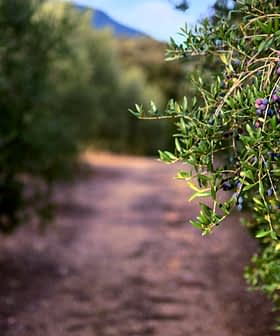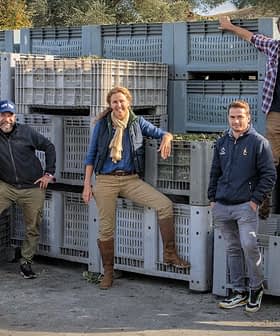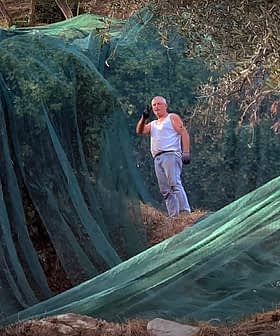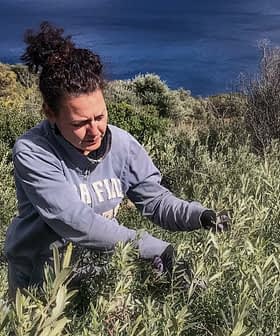Italian and Croatian Olive Growers Test New Carbon Credit Project
The GECO2 project, funded by the European Union, demonstrated that olive, fruit, and vine growers can participate in a carbon credit market focused on agriculture, benefiting farmers and the environment. Through the project, farmers were able to measure their carbon sequestering capabilities and sell carbon credits, while buyers in the food sector could offset greenhouse gas emissions by purchasing these credits. The project involved hundreds of farmers in Italy and Croatia, encouraging the adoption of sustainable farming practices and generating around three tons of carbon sequestered per hectare on average.
A three-year-long European Union-funded project has shown that olive, fruit and vine growers can efficiently contribute to developing a carbon credit market focused on agriculture, creating new opportunities for farmers and producing beneficial effects for the environment.
The experimental market set up by the Green Economy and CO2 project (GECO2) allowed the agricultural partners to measure their carbon sequestering capabilities and sell carbon credit.
Thanks to GECO2, we have verified that participating Italian and Croatian growers sequester around three tons of carbon per hectare on average.
On the other side of the spectrum, GECO2 buyers in the food sector were allowed to offset portions of their greenhouse gas emissions by buying those credits.
Coordinated by Italian and Croatian officials, hundreds of farmers and entrepreneurs on both banks of the Adriatic Sea participated in the scheme, which encouraged the adoption of many farming best practices.
See Also:Why the U.S. Lags Behind Other Western Nations on Carbon Tax Issue“Thanks to the best practices in managing their territory and the biomass, farmers who participated in the project have learned that a virtuous approach can lead to carbon credits generation,” Giulia Villani and Antonio Volta, researchers at the Climate Observatory of the Italian Agency for Energy and Environment of Emilia-Romagna and members of the GECO2 coordinating team, told Olive Oil Times.
“Thanks to GECO2, we have verified that participating Italian and Croatian growers sequester around three tons of carbon per hectare on average,” they added.
In a note published by Legacoop, one of the project partners, the cooperative’s president, Cristian Maretti, noted how “this project highlights that the capture of carbon dioxide is possible in agriculture and generates interesting earnings and carbon credits for farmers.”
“There is interest in supporting more sustainable agricultural supply chains, and therefore there is a potential for the voluntary market to work,” he added.
The carbon sequestering capabilities of every involved farmer were input into the GECO2 algorithm, which calculated how the volumes translated into corresponding credits.
“The first tool that the project designed was the carbon calculator needed to produce agricultural-generated carbon credits,” Villani and Volta said.
“After that, another calculator was developed to estimate the carbon emissions produced by the GECO2 buyers,” they added. “In the test project, we have specifically focused on the emissions related to the energy use of the participating companies.”
In the third step of the development project, GECO2’s partners created the platform where the actual carbon credit trading occurs.
By answering a questionnaire, participating farmers provide the carbon calculator with the relevant data, such as the slope of the land, soil drainage properties and texture and the annual rainfall.
They also had to list the species and number of permanent crops and trees growing in their fields, the age of the groves and the height of the trees. Other data requested for the carbon calculator included the amount of forestry crops and other vegetation such as shrubs or hedges.
Farmers were also asked to be very specific about the treatments used in the field, such as the use of fertilizers and other chemicals, how they are used and applied and in what quantities they are applied.
They also had to detail the management of compost materials describing the origin, type and how they are used. At the same time, the farmers were also asked to measure their fuel use and energy consumption.
“One of the limits we have met by using the questionnaire is the fact that it might be too detailed, in the sense that it can end up costing farmers if it needs to be done for each of their fields,” Villani and Volta said.
See Also:Sustainable Olive Oil Production Helps Mitigate Climate Change“The other limit being that not all farmers have all those data, nor did they ever explore specific characteristics of their activity,” they added.
On one side, that means that some producers input estimates instead of specifics into the calculator, distorting the reality of the amount of carbon sequestered and corresponding credits produced.
However, it also allowed farmers to thoroughly review and understand the environmental impacts of their agricultural operations.
Among the data digested by the algorithm, a specific space was given to farming best practices.
These included organic farm management, application of soil conservation tillage, use of cover crops, farm management with hedges, rows and forest patches integrated into field crops, reuse of wood residues to improve soil, reduced pesticide deployment and no biomass burning.
The farmers were also asked which best practices they intended to adopt to participate in the project.
Over the three years of the project, which ends on May 31, GECO2 involved around 160 farmers covering 1,877 hectares and contributing to 205 experimental fields.
As a whole and for the project’s duration, the participating agricultural activities stored more than 6,500 tons of greenhouse gases.
The training phase also included 42 seminars aimed at farmers, businesses, public administrations and citizens.
“GECO2 has seen real transactions, which is a relevant achievement,” Villani and Volta said. “Like all E.U‑funded projects, GECO2 is open and accessible, so the entire mechanism that the project has set up can be studied, widened and applied in other contexts.”
“One of the requests coming from the E.U. is the replicability, which is the possibility for others within the European Union to implement the project and expand it,” they added.
The project’s partners hope to have GECO2 pave the way to build a comprehensive carbon credit market based on agriculture and contribute to the development of E.U.-wide projects.
“By the end of the year, the European Commission should announce an official carbon credit calculating methodology which member countries will then be able to adopt,” Villani and Volta concluded.









